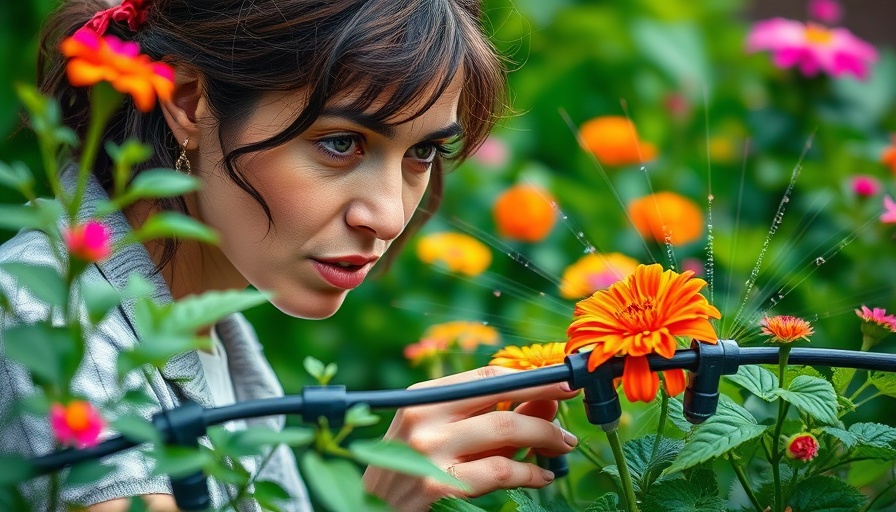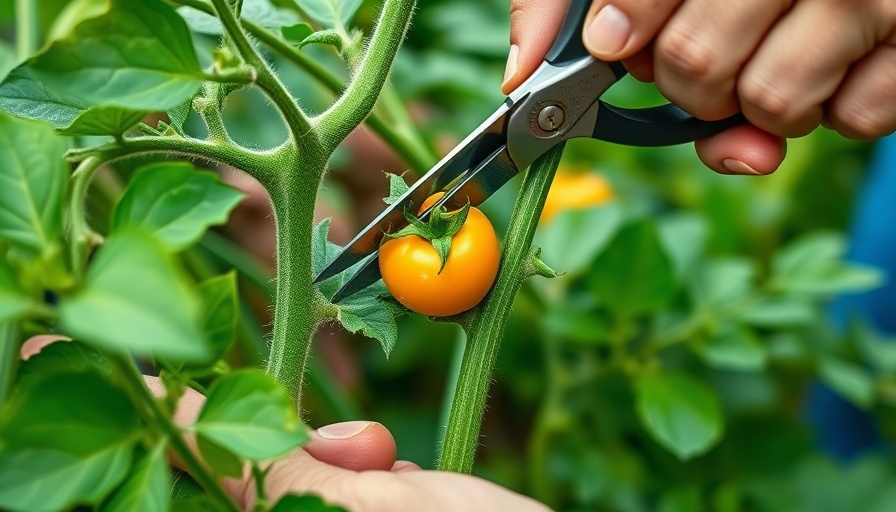
How to Ensure Your Garden Thrives While You Vacation
As summer beckons, many of us look forward to vacationing, but what happens to our cherished gardens while we are away? Traveling can leave your plants without their dedicated caretaker, raising concerns about their well-being. In this article, we explore effective strategies to vacation-proof your garden, ensuring it's healthy and vibrant upon your return.
In 'Traveling? Try This with Your Garden!', the discussion dives into practical gardening techniques to maintain your plants' health during vacations, exploring key insights that sparked deeper analysis on our end.
Water Strategies for In-Ground and Raised Beds
One of the most significant aspects of maintaining your garden during your absence is proper watering. If you grow in in-ground beds, consider investing in a timer for your sprinkler system. This way, you can automate the watering process according to the plants' needs. Additionally, doing a deep soak before your departure is crucial. Running your tap for an hour or more can help keep the soil adequately moist.
Another effective method is to use mulch. Prior to leaving, pre-soak a container of mulch overnight and then distribute it generously on top of your garden beds. This technique helps retain moisture by reducing evaporation, ensuring your plants stay hydrated even in your absence.
Container Plant Care: Top Tips
Container plants, while beautiful, tend to dry out quickly. To combat this, there are a few tricks you can use. Start by moving your containers into a shady spot and crowding them together. This will create a microclimate with increased humidity, reducing the overall water requirement.
You can also use a DIY pop bottle dripper method. Fill a two-liter plastic bottle with water, poke holes in the cap, and invert it into the soil of your container. This method gradually releases water as the soil dries out. Alternatively, invest in terracotta spikes or similar devices that provide a consistent water supply for your indoor plants during the hotter months.
Innovative Solutions: The Kitty Pool Approach
If you're looking for a low-maintenance solution, consider using a kiddie pool! Simply place your containers inside the pool, ensuring there’s a hole in the bottom of each pot for capillary action. Fill the pool with water, and if desired, add fertilizer for a nutrient boost. Ask a friend to top off the kiddie pool periodically while you're away to maintain a happy and healthy garden.
Preventing Pests and Diseases
While maintaining hydration is pivotal, keeping pests and diseases at bay is equally important. Before heading out, apply a preventative treatment using neem oil or insecticidal soap. If you have concerns about diseases such as powdery mildew, a preventative application of powdered sulfur or milk can be effective. Using lightweight row covers can also help protect your plants from pests without disrupting their growth significantly.
Dealing with Overgrowth and Bolting
Tending to your garden before leaving can prevent issues like overgrowth or bolting. If you're growing fast-maturing vegetables like lettuce, consider harvesting some of them before your trip. This not only reduces the risk of bolting due to heat but also provides you with fresh vegetables to enjoy while on holiday.
Using shade cloth can also help keep your plants from bolting. By reducing heat exposure, you allow your plants to continue thriving without the added stress of high temperatures.
Why Vacation-Proofing Matters for Okanagan Gardeners
If you live in the Okanagan, with its beautiful yet occasionally scorching summers, implementing these garden care strategies is crucial. Local gardeners can particularly benefit from timely watering methods and pest prevention, as the region can be prone to rapid plant stresses due to high temperatures.
By considering the specific climate and conditions in your area, you can tailor your garden care approach, ensuring your hard work is not in vain while you take a much-needed break.
Final Thoughts: Enjoy Your Vacation Without Worry
By planning ahead and implementing these strategies, you can enjoy your vacation without the stress of coming home to a dead or wilting garden. Whether you're dealing with inground beds, raised beds, or containers, these techniques will help maintain the health of your plants. Each summer, my family relies on these tried-and-true methods to keep our garden thriving, and I encourage all Okanagan gardeners to adopt them. So, pack your bags and relax knowing that your garden will be waiting for you, lush and alive!
 Add Row
Add Row  Add
Add 




Write A Comment